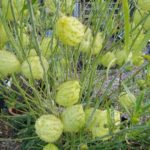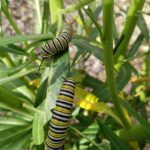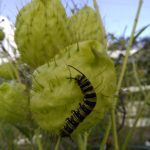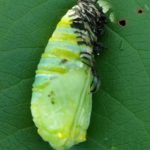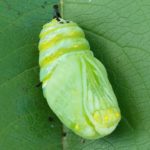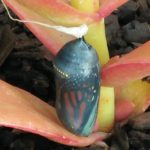Monarch butterflies – beauty in abundance!
We have had the most exciting autumn here at Platypus Gully, with the influx of gorgeous Monarch butterflies, breeding on our Swan plants!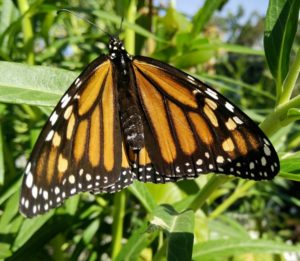
Noted for their annual migration in North America, Monarch butterflies can cover thousands of kilometers with a corresponding multi-generational return. In other words, the adults that start the journey are the great-great-great-great-great-great grandparents of those that return. How do they know where to go?
In the past, some must have flown quite a way off course, as they are not native to Australia even though they have now made their home here quite happily!
For those who like trivia, their Latin name is Danaus plexippus, meaning ‘one who urges on horses’, namely a charioteer, and the common name ‘Monarch’ may be in honor of William the 3rd of England.
To attract these beauties into your garden, you will need nectar producing plants for the adults, and larval food plants for the caterpillars who are quite specific! They will only eat the leaves of Gomphocarpus physocarpus, commonly known as the swan plant, milkweed or the unfortunate name ‘hairy balls’.
The adult female butterflies lay a single egg on the underside of the leaf, ensuring the food supply for the little caterpillar which hatches in 3 – 8 days. After 5 distinct stages of development, the larva searches for its pupation site. It attaches itself to its chosen surface using a little silk pad, then molts into an exquisite opaque, blue-green chrysalis with small gold dots that look like they have been painted on with a tiny paintbrush.
After 8 – 15 days, depending on temperature, the chrysalis darkens and becomes transparent allowing the orange & black coloring of the wings to be seen through the thin outer layer.
The adult Monarch emerges with crumpled wings, hanging upside down. Fluids are pumped into the wings, until they expand, stiffen and dry to allow the butterfly to fly off to feed on the nearest nectar plants.
There are many different shrubs and perennials hat we’ve planted in our garden for our butterflies. The favorites of the Monarch include Buddleia, Echinacea, Hesperis (Dame’s rocket), Trifolium (Giant clover), Syringa (Lilac) and our flowering carrots and parsnips.
We have had great joy and delight in watching several generations grow and mature this autumn. We hope they return next year!
Happy gardening,
Amanda
We hope you enjoy the videos below!


